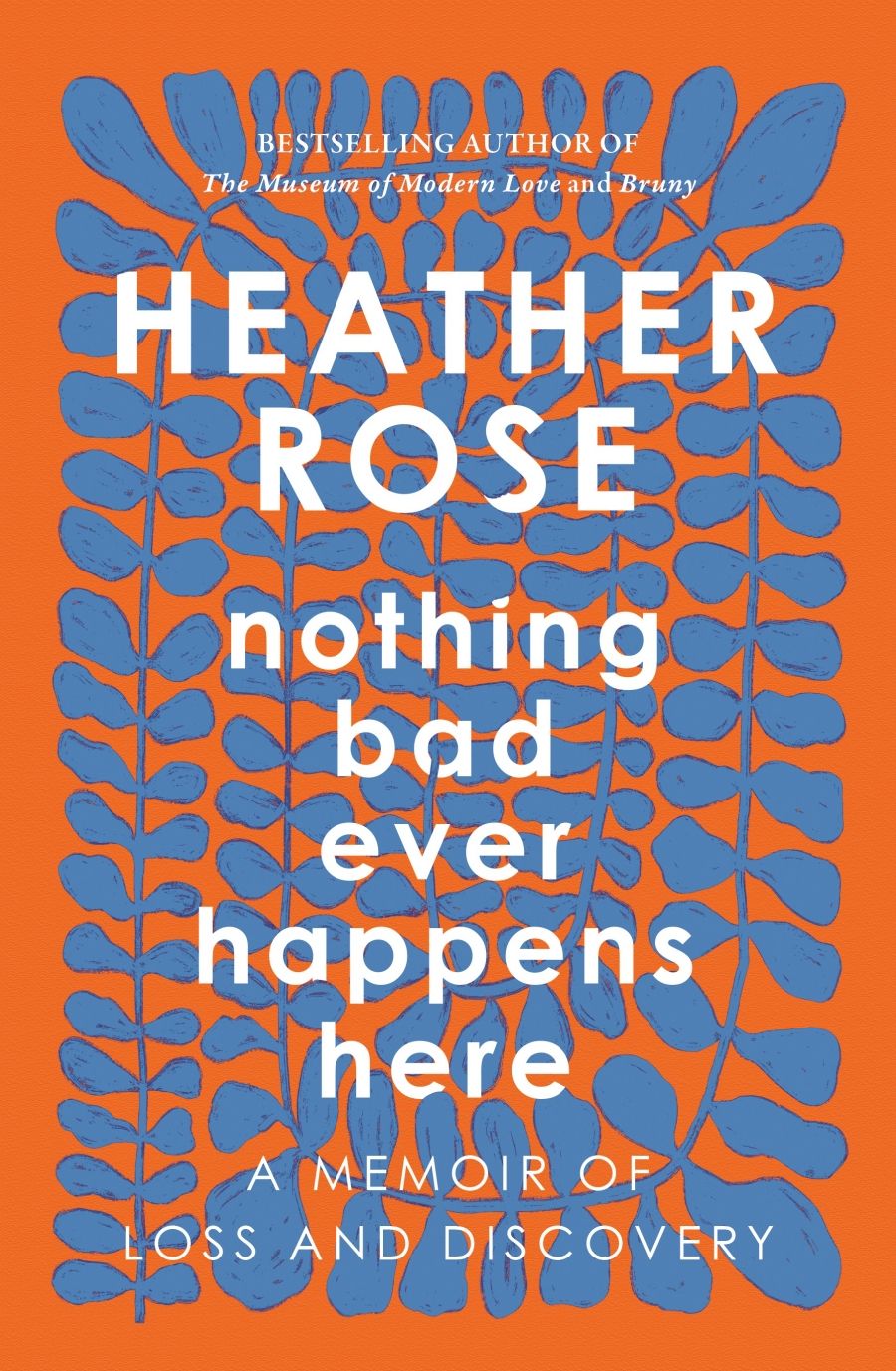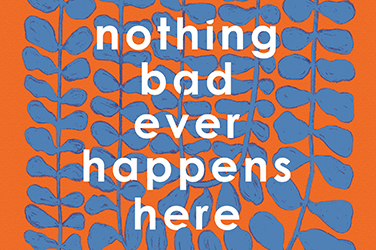
- Free Article: No
- Contents Category: Memoir
- Review Article: Yes
- Article Title: Joy is my discipline
- Article Subtitle: Life and its contingencies
- Online Only: No
- Custom Highlight Text:
The Tasmanian childhood recounted by Heather Rose sounds idyllic, to the point of being suspect, a too-perfect vision of wholesome family life. ‘We do not own a television. Books and games, music and friends, the radio and the outdoors are our entertainment,’ she writes. In this paradise of neighbourly trust, ‘no-one locks their doors. We are welcome in everyone’s houses.’ Rose remembers her mother as a domestic goddess: ‘Along with a career, four children and a husband, she bakes and cooks, sews, preserves, sings, embroiders, gardens, arranges flowers, decorates cakes, and makes kayaks and pottery’, while also contriving to be ‘slender, elegant’, and beautiful. At this point, you might wonder if the title – Nothing Bad Ever Happens Here – is not, as you first assumed, meant to be ironic. But how long can this flawless, nostalgic reverie be sustained?
- Featured Image (400px * 250px):

- Alt Tag (Featured Image): Kirsten Tranter reviews 'Nothing Bad Ever Happens Here' by Heather Rose
- Book 1 Title: Nothing Bad Ever Happens Here
- Book 1 Biblio: Allen & Unwin, $32.99 pb, 256 pp
- Book 1 Readings Link: https://www.booktopia.com.au/nothing-bad-ever-happens-here-heather-rose/book/9781761066320.html
Her memoir traverses vastly different, disjunctive phases of life, and experiences. Rose reflects on how difficult it has been to reconcile the different parts of her life. She has been a successful advertising executive, an initially reluctant campaigner for environmental causes, an initiate in the Native American tradition of the Sun Dance, a writer, a mother, a wife, a divorcee.
After high school, Rose travelled in Asia and wound up in a Buddhist temple in Thailand where she lived for months in submission to the demands of monastic life, meditating up to sixteen hours a day. If Byron’s death explains the recurring theme of grief, the chapter on her time in the monastery helps to make sense of her distinctive prose, the rigorous simplicity of her sentences. The clarity of purpose she discovered in meditation resonates on the level of style: unhurried, lucid, dedicated to observing what is.
Not only Rose’s soul but also her body has been crushed by life and its contingencies: she suffers from inflammatory arthritis, and the chapter on chronic pain feels the most direct and brutally honest. It is the one place where a trace of anger breaks through the author’s carefully disciplined composure; she recounts the frustration of being met with well-meaning advice and questions about whether she has tried one treatment or another. Rose is ashamed of the pain and works incredibly hard to hide it so as not to be defined by it. Her vivid descriptions of what a ‘flare’ feels like are terrifying, from the agony of tiny movements caused by another person sitting on the bed, to the rainbow of colours that attends pain when it surpasses measurement.
There is something penitential in the punishing spiritual practices Rose has embraced, but she does not regard the pain brought by illness as redemptive. It has brought her powers of compassion, she admits, as well as insights into ‘health, love, kindness, friendship, depression and joy’. She poses the question of whether she would give all that up to live without pain, and gives an answer that seems honest, and complicated: ‘Yes. And no.’ Illness makes joy into something to be cultivated with serious, methodical intensity: ‘Joy is my daily practice,’ she writes, ‘Joy is my discipline.’
Sometime after the end of her marriage, Rose visits the site of her brother’s and grandfather’s deaths, wanting to honour them. Sitting on the shore after swimming a swim, she has a flash of insight, a strange and paradoxical moment of acceptance that registers the pain of their deaths yet recuperates it. Rose finds herself able to perceive the suffering and fear of her brother and grandfather as they drowned: ‘I can imagine all of it,’ she writes, ‘and yet, beyond whatever occurred, I can’t feel anything unsettling or frightening or perturbing.’ She can only see them having surrendered to some force that summoned them away, ‘in an act of grace’. The phrase ‘Nothing bad ever happens here’ comes to her, unbidden, and overwhelms her senses. It is certainly not ironic, and yet also is not a sentimental appeal to the idea of a silver lining.
It is hard to know how to read this phrase, and her acceptance of it: is it denial masquerading as acceptance? Or is it enlightened spiritual insight, a Buddhist vision of equanimity? Wherever it comes from, it eventually brings a measure of peace. In a similar vein, Rose believes that she sees her brother’s ghost twice, and both times it reassures her that his death is okay with him. It is a comforting idea.
‘Grief is a pilgrimage, a long song, a poem that is never finished,’ Rose writes. At the very end, she turns to a form of life advice that feels too polished, too finished, and offers a list of dicta that sound more like stock inspirational quotes than interesting grief poems. ‘Forgive yourself. Love who you want to.’ I skimmed them quickly, with the uncomfortable sense that I had maybe just come across one of them on a tote bag advertised in my social media feed. This is probably in the nature of life advice dicta, though. As a narrative of her own pilgrimage, Rose’s memoir is infused with her own unique, spare lyricism, invitingly open to mystery.

Comments powered by CComment